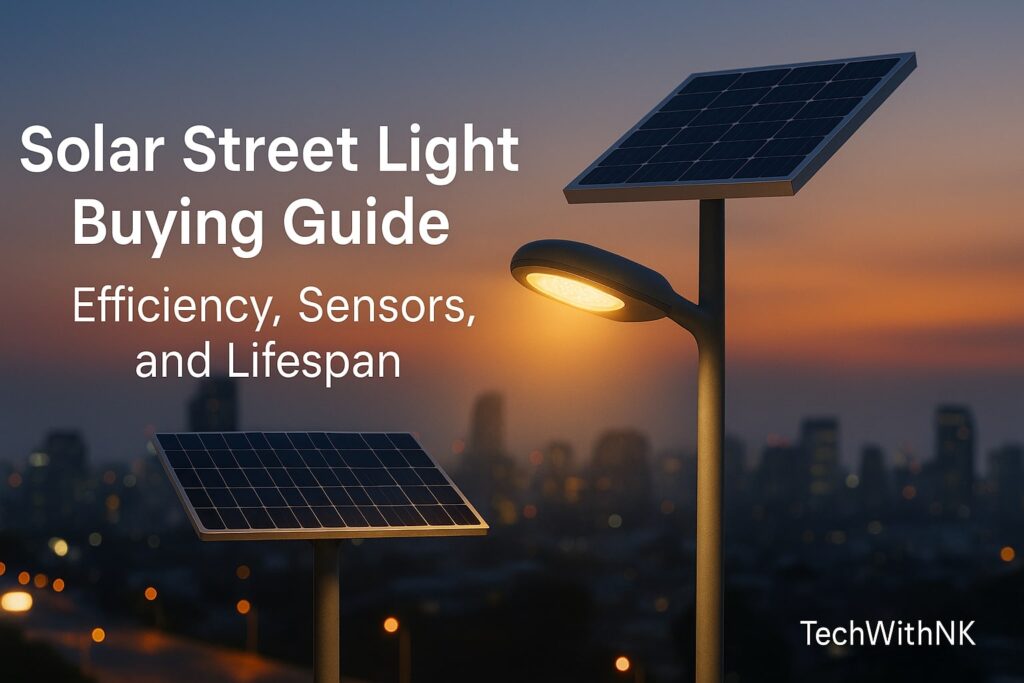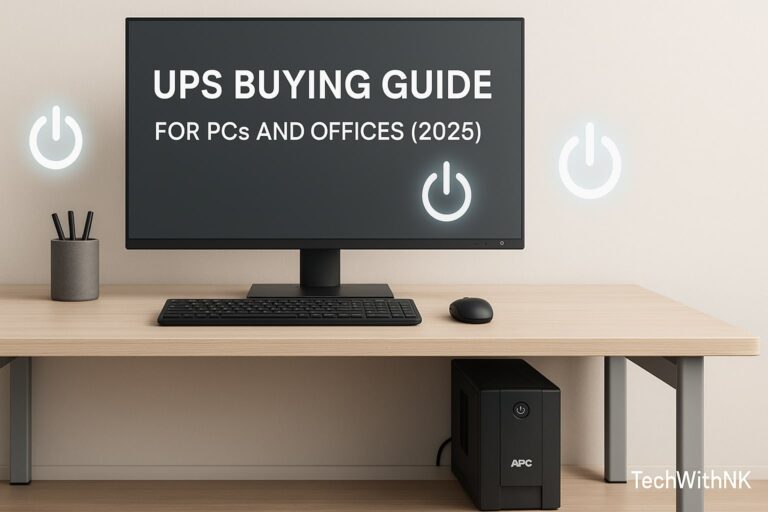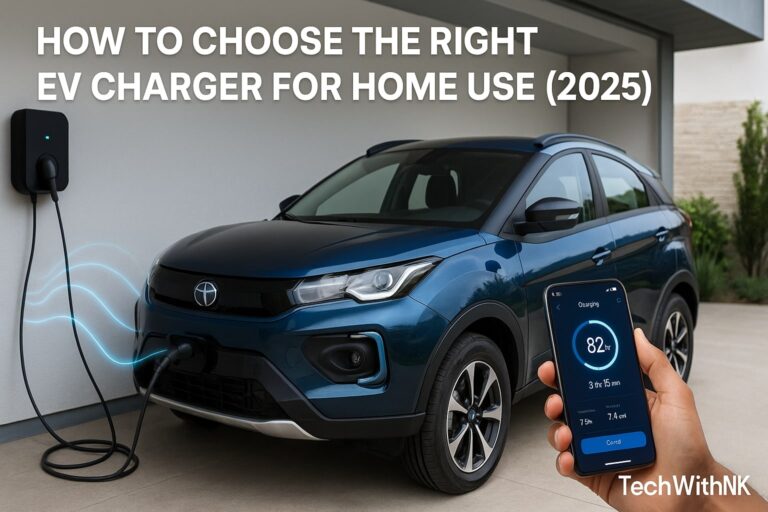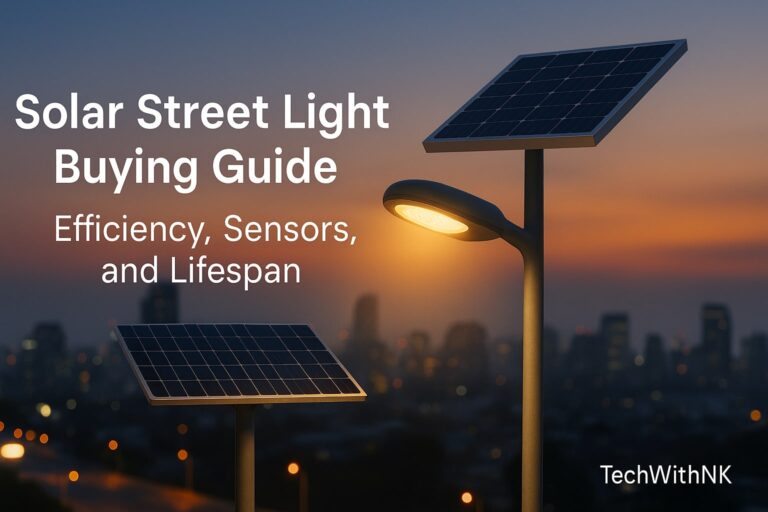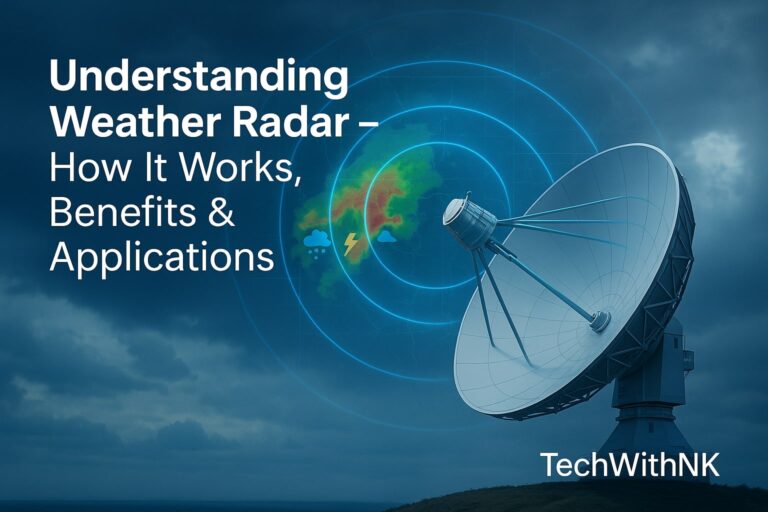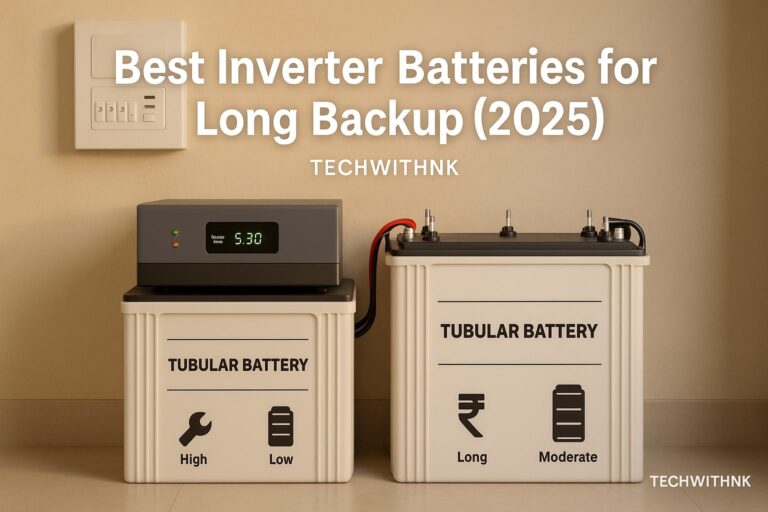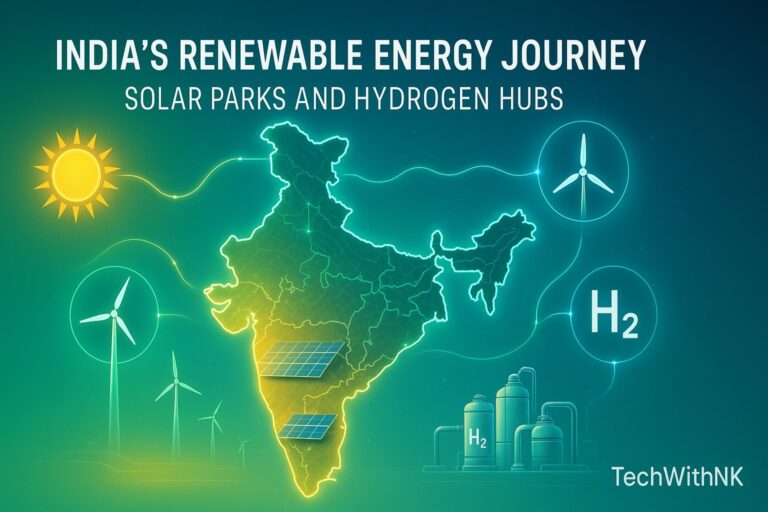🌍 Introduction: Lighting the Path with Solar Power
Solar street lights have become a common sight in modern cities, rural areas, and highways — providing bright illumination without the burden of electricity bills. With rising energy costs and a global shift toward green technology, solar-powered lighting systems are now essential for sustainable development.
But if you’re planning to install solar street lights — for your home, farm, factory, or public area — you need to understand how to choose the right one.
This comprehensive Solar Street Light Buying Guide will help you make an informed decision — covering efficiency, sensors, battery types, light output, pole height, and lifespan.
☀️ What is a Solar Street Light?
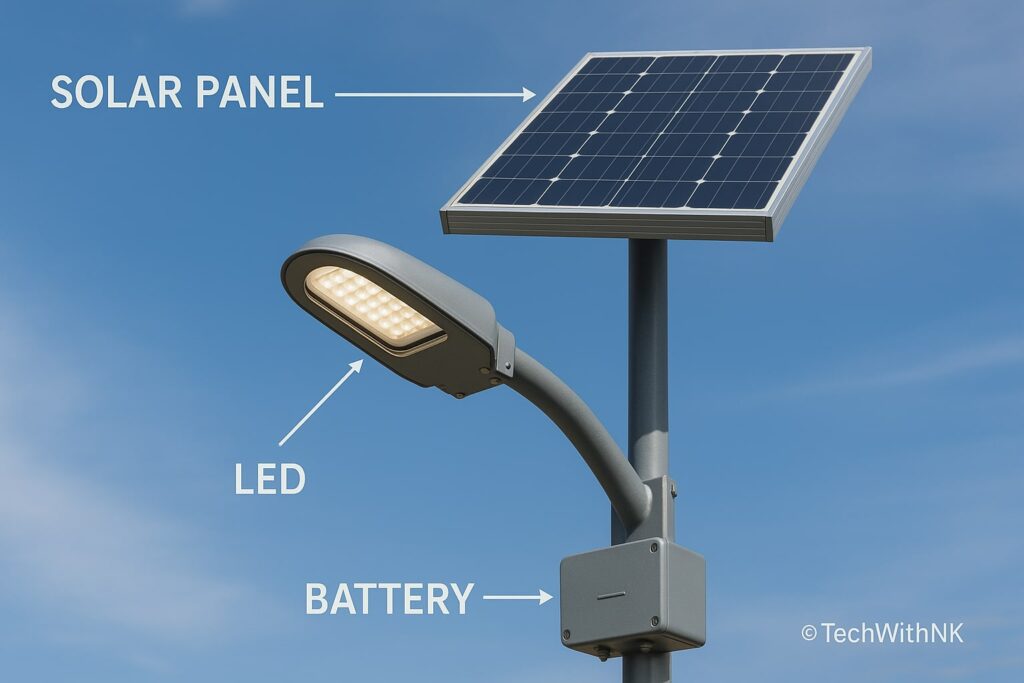
A solar street light is a standalone outdoor lighting system that uses solar energy to power LED bulbs. It consists of four main components:
Solar Panel – Converts sunlight into electricity.
Battery – Stores power for night-time use.
LED Lamp – Provides illumination.
Controller (and Sensor) – Manages charging, discharging, and automatic operation.
During the day, sunlight charges the battery. At night, the stored energy powers the LED light automatically — no wiring, no grid connection, and zero running cost.
⚙️ Types of Solar Street Lights
Before buying, you should know the major types available:
1. All-in-One (Integrated) Solar Street Light
Compact design: solar panel, battery, controller, and LED in one unit.
Easy installation and minimal maintenance.
Ideal for home streets, gardens, and small roads.
Usually includes motion/PIR sensors to save energy.
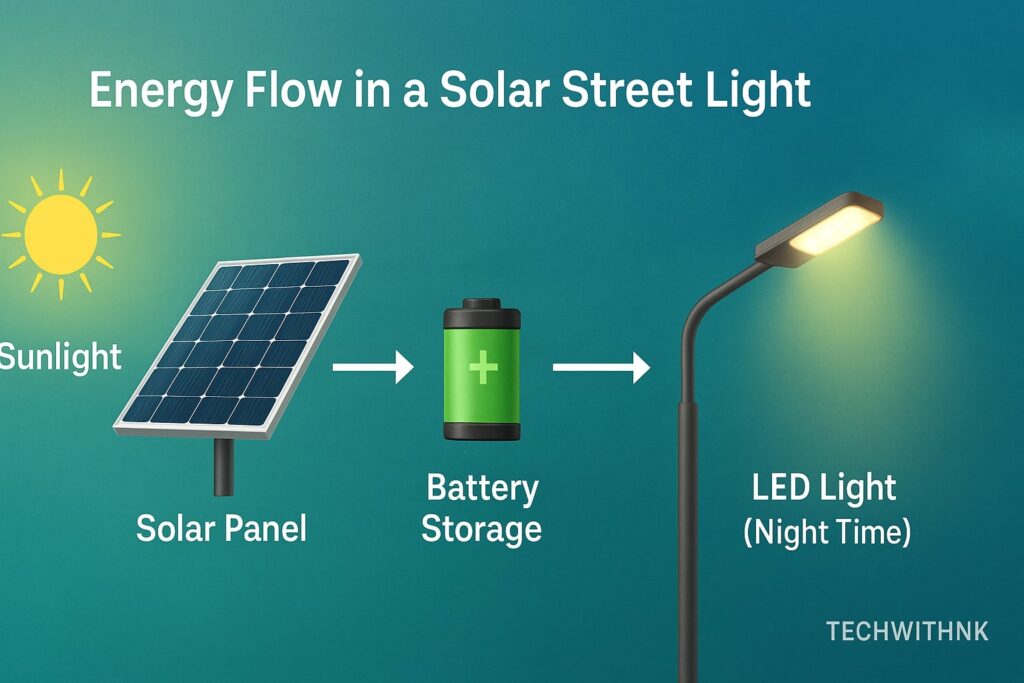
2. Semi-Integrated Solar Street Light
Solar panel separate from light unit.
Allows flexible panel positioning for maximum sunlight exposure.
Used for medium-traffic areas or community lighting.
3. Standalone or Conventional Solar Street Light
Traditional design with external battery box and pole-mounted components.
High wattage for highways, large campuses, or industrial zones.
Offers longer backup and higher brightness.
⚡ Understanding Solar Panel Efficiency
⚡ Understanding Solar Panel Efficiency
The solar panel is the heart of the street light. Its efficiency determines how well sunlight is converted into usable energy.
| Type of Panel | Efficiency | Features | Lifespan |
|---|---|---|---|
| Monocrystalline | 18–22% | High efficiency, works well in low light | 25 years |
| Polycrystalline | 15–18% | Slightly less efficient, affordable | 20 years |
| Thin-Film | 10–12% | Lightweight, flexible | 10–15 years |
Tip:
For long-term performance, monocrystalline panels are preferred. They produce more energy in the same area and last longer.
🔋 Battery: The Power Storage Backbone
A good battery ensures your light stays on all night — even during cloudy days. Let’s compare battery types:
| Battery Type | Advantages | Drawbacks | Typical Life |
|---|---|---|---|
| Lithium-ion (Li-ion) | Lightweight, fast charging, long life | Slightly costly | 4–6 years |
| Lithium Ferro Phosphate (LiFePO₄) | Very long life, safer, better temperature tolerance | Higher initial cost | 7–10 years |
| Lead-Acid (Gel or Tubular) | Cheap, easily available | Heavy, short lifespan | 2–3 years |
Recommendation:
Go for LiFePO₄ batteries — they offer the best balance of longevity, safety, and performance.
💡 LED Brightness and Lumen Output
The LED chip defines how bright your light will be. The brightness is measured in lumens (lm) — not watts.
| Application | Recommended Lumens | Equivalent Wattage |
|---|---|---|
| Home gate/garden | 1000–2000 lm | 8–15 W |
| Residential street | 2000–4000 lm | 20–30 W |
| Industrial area | 6000–8000 lm | 40–60 W |
| Highway or public road | 10,000+ lm | 80–100 W |
Pro Tip:
Always check luminous efficacy (lm/W) — a high-quality LED should deliver ≥120 lumens per watt.
🤖 Motion and Light Sensors (Smart Features)
Modern solar street lights come with smart sensors that make them energy-efficient and maintenance-free.
1. PIR Motion Sensor
Detects human or vehicle movement.
Automatically increases brightness when motion is detected.
Saves power during inactive hours.
2. LDR (Light Dependent Resistor) Sensor
Turns the light ON automatically at dusk and OFF at dawn.
3. Microwave/Radar Sensor
Advanced detection range (up to 10 meters).
Works even through glass or thin barriers.
These sensors optimize battery use, ensuring longer runtime and intelligent operation.
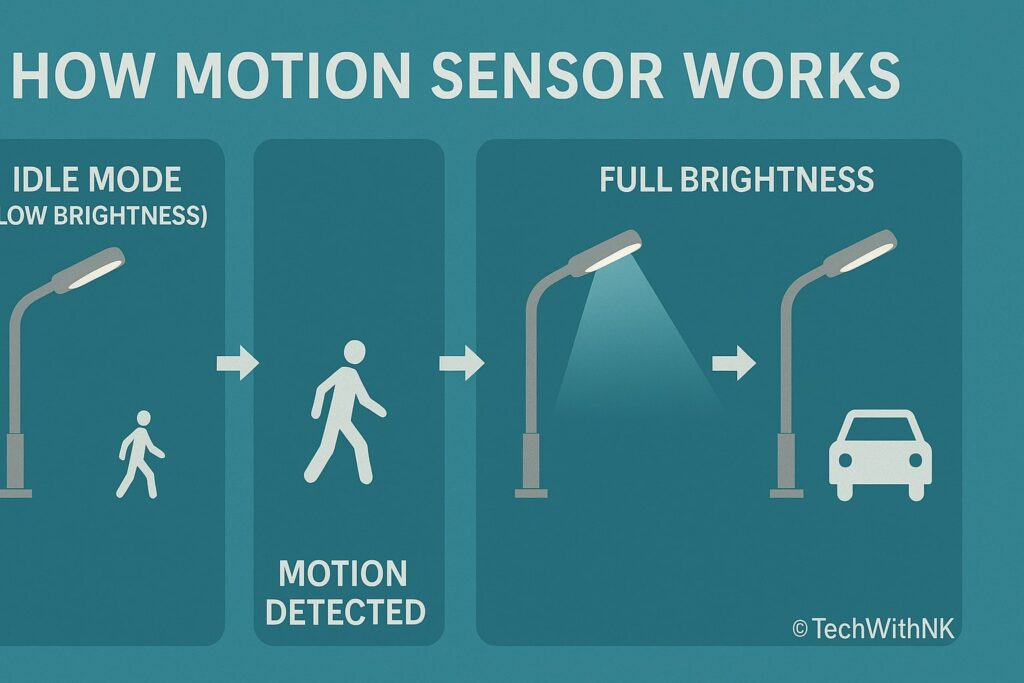
🌙 Backup Duration and Working Hours
A reliable solar street light should work for 8–12 hours per night and offer 2–3 days of autonomy (backup without sunlight).
Standard Models: 8–10 hours backup
Premium Models: 12–15 hours backup with 2–3 days autonomy
Always check battery capacity (in Ah or Wh) to confirm the runtime.
Formula:
Backup Time (hours) = Battery Capacity (Wh) ÷ LED Power (W)
🏗️ Pole Height and Installation
Choosing the right pole height ensures even light distribution and coverage.
| Application | Pole Height | Spacing Between Poles |
|---|---|---|
| Garden/Pathway | 3–4 m | 8–10 m |
| Residential Street | 5–6 m | 15–20 m |
| Industrial Area | 6–8 m | 25–30 m |
| Highways | 9–12 m | 35–40 m |
Use hot-dip galvanized poles to resist corrosion and weather damage.
🌦️ IP Rating and Weatherproofing
Solar street lights are outdoor devices — they must withstand rain, dust, and heat.
| IP Rating | Protection Level | Suitable For |
|---|---|---|
| IP65 | Dust-tight & water jets | Standard outdoor use |
| IP66 | High-pressure water & dust protection | Heavy rain areas |
| IP67 | Temporary water immersion | Coastal or flood-prone zones |
Minimum requirement: IP65 for any outdoor solar light.
🔌 Controller and Smart Operation
The controller manages energy flow between solar panel, battery, and LED.
Key Features to Look For:
PWM or MPPT Controller: MPPT offers 15–20% better efficiency.
Auto Dusk-to-Dawn Operation
Overcharge & Overdischarge Protection
Temperature Compensation
Smart App Connectivity (optional)
For larger installations, MPPT-based controllers are more efficient and reliable.
🔆 Lifespan of Solar Street Lights
Each component has its own lifespan. When you buy, consider the total system durability:
| Component | Average Lifespan |
|---|---|
| Solar Panel | 20–25 years |
| LED Lamp | 50,000–60,000 hours (~12–15 years) |
| Battery | 5–10 years (depending on type) |
| Controller | 5–7 years |
Tip:
Always choose branded lights with replaceable batteries and panels for long-term use.
🧩 Maintenance Tips
Solar street lights are mostly maintenance-free, but periodic checks help ensure performance.
Clean the solar panel every 2–4 weeks to remove dust.
Inspect wiring and connections annually.
Check battery health every 2–3 years.
Ensure pole and mountings are rust-free and tight.
Avoid shade on solar panels for optimal charging.
💰 Price Range in India (2025)
| Category | Typical Wattage | Approx Price (₹) |
|---|---|---|
| Home/Garden Light | 12–20 W | ₹2,000 – ₹4,000 |
| Street Light (Residential) | 30–40 W | ₹5,000 – ₹9,000 |
| Industrial/Highway | 60–100 W | ₹10,000 – ₹20,000 |
| Smart Motion Sensor Model | 40–60 W | ₹7,000 – ₹12,000 |
(Prices vary by brand, battery type, and panel capacity.)
🏆 Top Solar Street Light Brands in India (2025)
Su-Kam Solar
Luminous Solar
Exide Solar
Syska LED Solar
Philips Solar Street Light
V-Guard Solar
Wipro Solar
Microtek Solar
All these brands offer BIS-certified products with after-sales service and warranty (typically 2–5 years).
🌞 Choosing the Right Solar Street Light – Quick Checklist
✅ Monocrystalline solar panel (≥18% efficiency)
✅ LiFePO₄ battery for long life
✅ LED efficacy ≥120 lm/W
✅ PIR motion sensor for energy saving
✅ IP65 or higher protection
✅ Automatic dusk-to-dawn controller
✅ 12–15 hours of lighting with 2–3 days backup
✅ Warranty of at least 2 years
🧠 Pro Tips Before You Buy
Prefer ISI or MNRE-approved solar lights.
Avoid low-cost models with no battery specifications.
Check for real lumen output, not just wattage.
Buy from authorized dealers or verified online stores.
Ensure spare parts availability (battery, LED, panel).
🔋 Real-World Example: Energy Savings
A 40 W solar street light running 12 hours per night consumes 0.48 kWh/day — equivalent to saving ~175 units of electricity per year per light.
At ₹8/unit, that’s ₹1,400 saved per light annually, not counting wiring and maintenance savings!
🌏 Environmental Benefits
Reduces carbon emissions by 0.3–0.5 tons CO₂ per light per year.
Promotes energy independence and sustainability.
Ideal for off-grid rural areas and smart cities.
🧭 Conclusion: Light Up the Future with Solar Innovation
Solar street lights are more than just illumination — they represent a sustainable, smart, and cost-effective approach to outdoor lighting.
By choosing the right panel, battery, and sensor technology, you ensure long-lasting brightness with zero electricity cost and minimal maintenance.
Whether it’s for your home driveway, factory, or village street, investing in a high-quality solar street light today means contributing to a cleaner, brighter tomorrow.
How long do solar street lights last?
A quality solar street light can last 10–15 years, depending on battery and LED lifespan.
Do solar street lights work during cloudy days?
Yes. The system stores energy in the battery, ensuring 2–3 days backup even without sunlight.
What is PIR in solar lights?
PIR (Passive Infrared Sensor) detects motion and adjusts brightness automatically to save energy.
